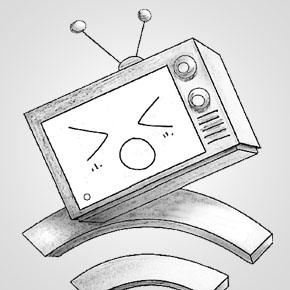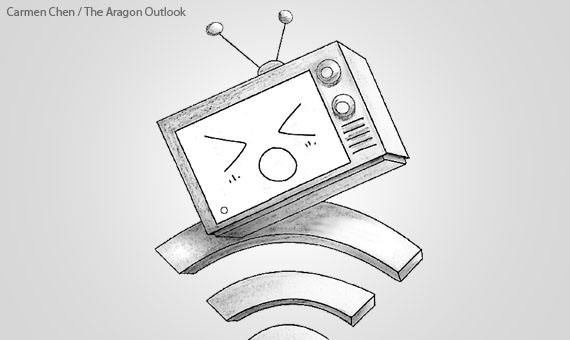
Around 6 p.m. after school, Aragon sophomore Dasha Shestakov is finished with her homework. She might watch TV while she practices her drawing, do housework, or surf the internet while the TV plays in the background. As she sits on her couch, however, she does not reach for the cable TV remote. Instead, she grasps for the white game controller with the pale “Wii” logo on the front.
Shestakov is one of many students who has discovered internet TV show streaming as a substitute to traditional cable television. “You can choose what shows you want to watch without waiting for them to come on,” she says. Most of the time, she streams through her game console—a method which 50 percent of all Netflix subscribers use. Alternatively, she could watch by using a web browser or another dedicated device. Because of the versatility of streaming, it is renowned in our instant-entertainment world.
Junior Ria Patel praises streaming services for alleviating the frustrating and complicated schedules of cable TV. “When you want to watch movies and shows when they’re not on air, Netflix and Hulu make it easier.”
This accessibility, however, can be haunting for students. Having thousands of hours of shows and movies at the click of a mouse is extremely distracting. Senior Will Abrams says, “Instead of you not doing your homework only while a TV show is on air, you can watch TV at any time. It affects study habits.”
The idea of a more controlling viewer base in television does not always transcend generations, some argue. Patel claims kids watch more television than adults do. “Adults have more busy lives with work, while kids are more eager to watch TV after school is over.” In fact, teenagers are the second most television dependent age group, outmatched only by adults over age 65.
The way Americans satisfy their hunger for television— exemplified by the 250 billion hours watched every year—is not strictly legal. The TV show piracy epidemic is often attributed to the growing demand of instant viewing.
TV shows are among the most pirated forms of media, only behind movies and pornography in terms of illegal downloads. The HBO program “Game of Thrones,” for example, is on track to be the most pirated show of 2012 with downloads in the millions, according to Forbes. The show’s innumerable illegal downloads are often attributed to HBO’s proprietary and expensive cable service, not to mention the difficulty of subscribing in regions
outside the U.S. “It’s unfair how people in other countries can’t view HBO,” Shestakov comments. “Still, any kind of piracy is wrong.”
Even though the majority of illegal conduct occurs through downloads, not all piracy and illegal TV show viewing is strictly through downloadable media. Patel says, “People might pirate movies or TV shows and sell them illegally to gain profit.” National Public Radio reports that there is a rising trend of groups of illegitimate websites that stream illegal content and receive ad revenue on the side.
Ironically, the reason that many have turned away from cable TV is because of the same intrusive advertisements. “When you’re watching a movie [on cable], advertisements always appear at the best part of the movie and that ruins the mood,” says sophomore Jahan Rassouli.
Ads on illegitimate sites are sometimes even worse. They can litter the sidebars, play while the video buffers, or even pop up and expand when the mouse strays too near. It is questionable whether this illegal free streaming is more convenient or more pleasant than cable TV, especially when the advertisements are equally or more invasive.
For now, not all types of TV shows are present in the streaming scene. Ria Patel thinks that sports might make the switch to internet viewing, but with added difficulty. “They could transition, but you would be late for the excitement. It isn’t the same to view them after they happen.” Websites like Livestream and Youtube hope to remedy this problem. They plan to add social connectivity to the experience for communicating all of those expressions of victory, surprise, and awe in sports or live events.
The desire for connectivity in entertainment becomes increasingly apparent as the younger generations reach adulthood. As a result, cable TV is often stomped upon. Basic subscribers of cable television decreased by nearly 2 million people in 2010, reports the U.S. Census.
TV as a whole has a long history, and many Aragon students agree it will not perish immediately. “Cable TV isn’t going away soon,” Rassouli concludes. “Cable companies are like tobacco companies.”




